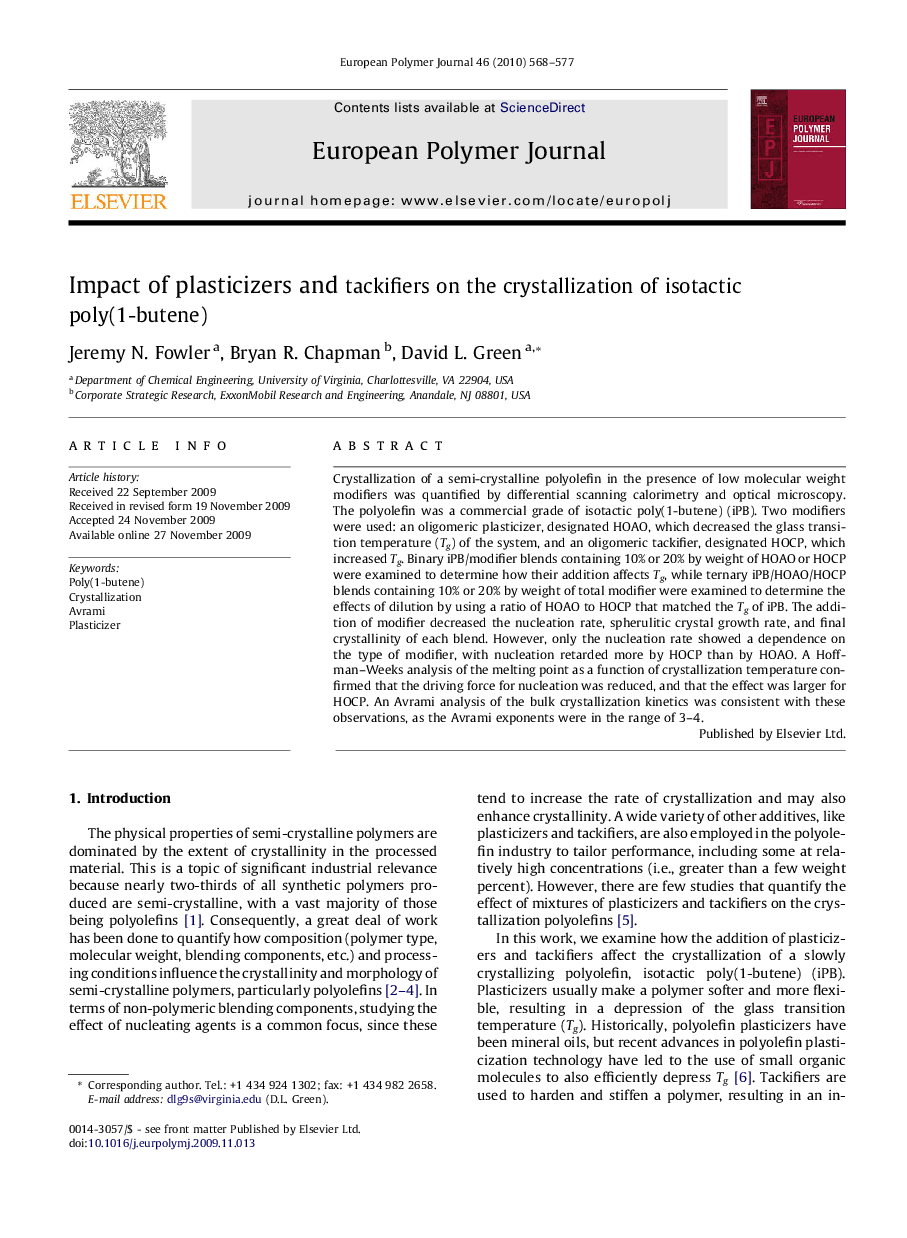| Article ID | Journal | Published Year | Pages | File Type |
|---|---|---|---|---|
| 1400014 | European Polymer Journal | 2010 | 10 Pages |
Crystallization of a semi-crystalline polyolefin in the presence of low molecular weight modifiers was quantified by differential scanning calorimetry and optical microscopy. The polyolefin was a commercial grade of isotactic poly(1-butene) (iPB). Two modifiers were used: an oligomeric plasticizer, designated HOAO, which decreased the glass transition temperature (Tg) of the system, and an oligomeric tackifier, designated HOCP, which increased Tg. Binary iPB/modifier blends containing 10% or 20% by weight of HOAO or HOCP were examined to determine how their addition affects Tg, while ternary iPB/HOAO/HOCP blends containing 10% or 20% by weight of total modifier were examined to determine the effects of dilution by using a ratio of HOAO to HOCP that matched the Tg of iPB. The addition of modifier decreased the nucleation rate, spherulitic crystal growth rate, and final crystallinity of each blend. However, only the nucleation rate showed a dependence on the type of modifier, with nucleation retarded more by HOCP than by HOAO. A Hoffman–Weeks analysis of the melting point as a function of crystallization temperature confirmed that the driving force for nucleation was reduced, and that the effect was larger for HOCP. An Avrami analysis of the bulk crystallization kinetics was consistent with these observations, as the Avrami exponents were in the range of 3–4.
Graphical abstractFigure optionsDownload full-size imageDownload as PowerPoint slide
